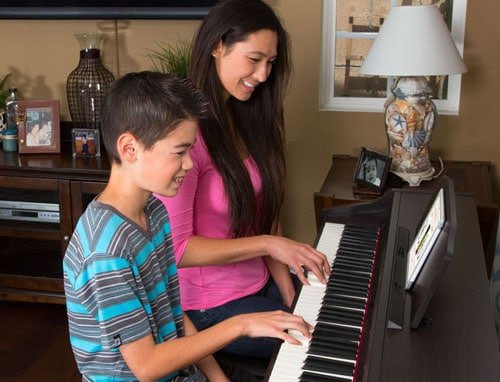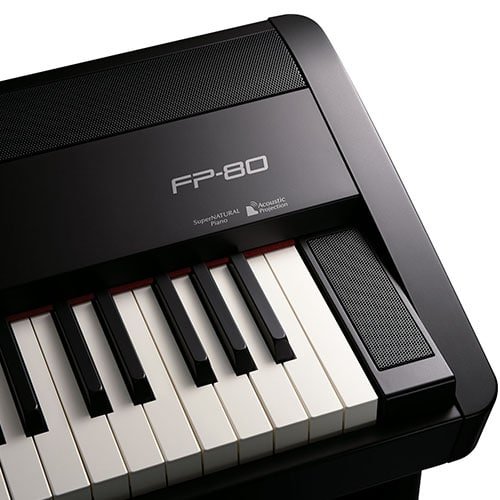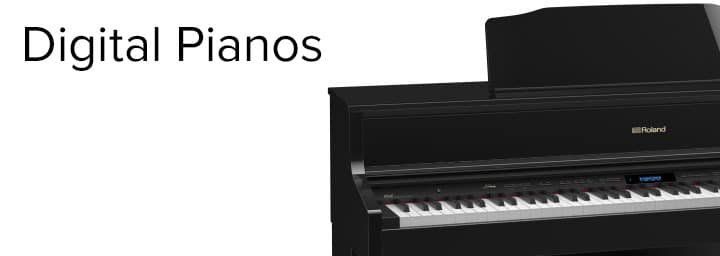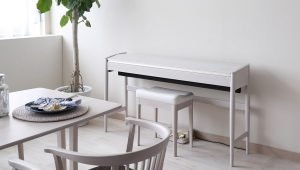Buying a new piano can be a bit tricky if you don’t know what to look for! The only way to truly find your perfect piano is to try them out. You really can’t beat going into a music shop and trying a few side by side; but once you’re in the store which areas should you be testing and what questions should you ask?
Online research is the obvious place to start. Wev hope that you will find the videos in this series helpful.
Each video explores a different aspect of digital pianos:
- the different types
- how the piano sound is created
- the importance of a good key action and
- what the different features do are just some of the areas covered.
Having done your initial research, you should go to a store and try a few side by side. The only way to find out how a piano will perform for you is to try it. This video will show you how to test a piano in store. We will also explore some of the questions that you should ask.
Recomended Articles:
The Advantages of Renting an Instrument
3 Peices of Advice on Buying your Child’s First Piano
Contributed by Roland UK

Things to know before buying a new piano…
1. Who is it for?
Before you get to the store to buy a new piano you should be clear on who it is for. Is the piano for you, your children or is it for the whole family? Is it possible that someone in the family will use the piano many years to come? This clarifies the decision regarding the quality of the instrument. Improved quality offers the advantages of better tone, touch, and features that will be appreciated over time. As with most things, the more money you spend, the better the product you receive.

2. The Tone – Does it inspire me to play?
When you get to a store to buy a new piano, the first thing to evaluate is the tone of the instrument. The best way of doing this is to select the three or four voices or sounds you think you’ll use most. Make them the standard for comparison as you compare models.
You should try at least two or three instruments in your price range to determine which sounds best to you. If you plan to use headphones at home, be sure to try out the pianos using headphones. This can make a tremendous difference to the sound. For consistency, you should bring your own headphones.

3. The Sound – How are the speakers?
For those times when you are not using headphones a digital piano with a good quality amplifier and speaker system is a must. Entry level digital pianos will normally have two stereo speakers. The better sounding digitals will have four or more speakers. The benefits of this are sometimes only really apparent when you sit at the piano. So by all means, when you buy a new piano, get the salesman to play for you! Make sure you sit at the piano yourself as well! Even if it is just to listen to a built-in demo song.

4. Buying a new piano – Evaluating the touch of the keys
Aside from sound, the most important element in the selection of a digital piano will be the feel of the action. A good action that feels right is vital to the development of a good piano technique. What feels right is largely subjective – a bit like comparing a car with light steering and one with heavy steering. You can drive them both without crashing but one will feel better to you.
The surface of the key is less subjective – entry level pianos have a shiny plastic surface whereas the more upmarket pianos will use a synthetic ivory substitute that not only looks more natural, it will offer better grip – so make sure you try both types.
The overall touch, of course, is not the total picture. You have to make sure that when you play the piano the touch translates into expressivity. A piano may have a great tone, but if the action doesn’t live up to the tone you may not be able to play expressively. So check how wide the dynamic range is. Also check how easy it is to control. You should be able to press a key down slowly and not hear anything at all. Equally, you should be able to get a very bright sound when playing fortissimo. Compare this dynamic range on different pianos – the wider, the better. Crucially, all of the shades in between should be easy to control. You can check this by repeatedly playing the same note from a soft whisper to a bright fortissimo.

5. Ease of Use
All of the amazing capabilities of the modern digital piano are of little value if you can’t figure out how to use them. Importantly, you should be able to access them quickly while playing. So think about the location, spacing, grouping, and labelling of the controls.
Also worth considering is the placement of connections you’ll use often. If you frequently switch back and forth between speakers and headphones, you’ll want to make sure the headphone jack is easy to locate. It should be accessible by sight or feel, and make sure the cord will be out of your way when plugged in. Also, if you’ll be using a USB memory device, make sure the USB port is easy to get to and not on the rear panel which is hopeless if the piano is against a wall.
Finally, you should check the warranty period. Today’s digital pianos are very reliable but things do go wrong just as they do on an acoustic piano. The standard warranty is 12 months. That being said, some of the Roland digital pianos come with a 10 year warranty!









